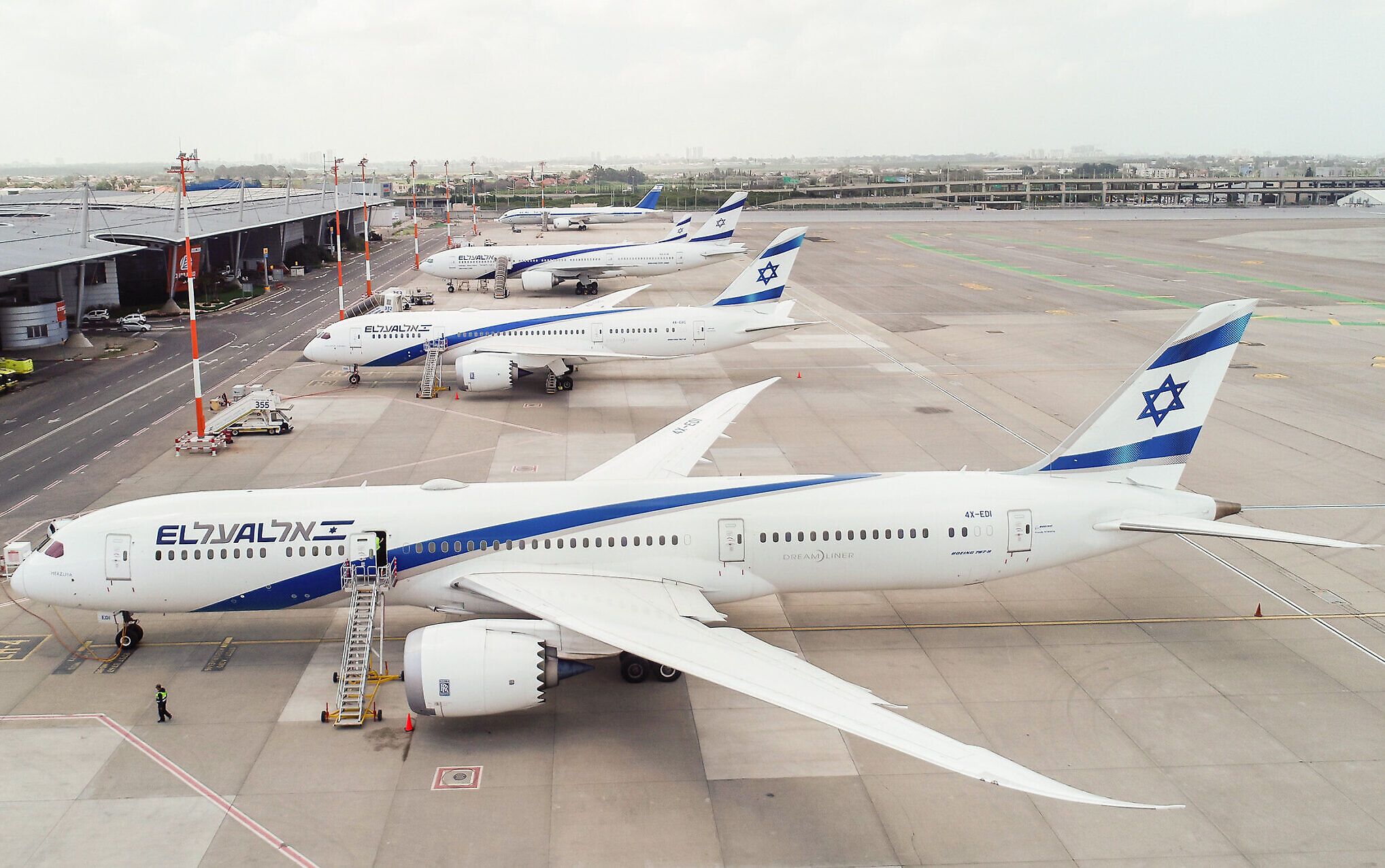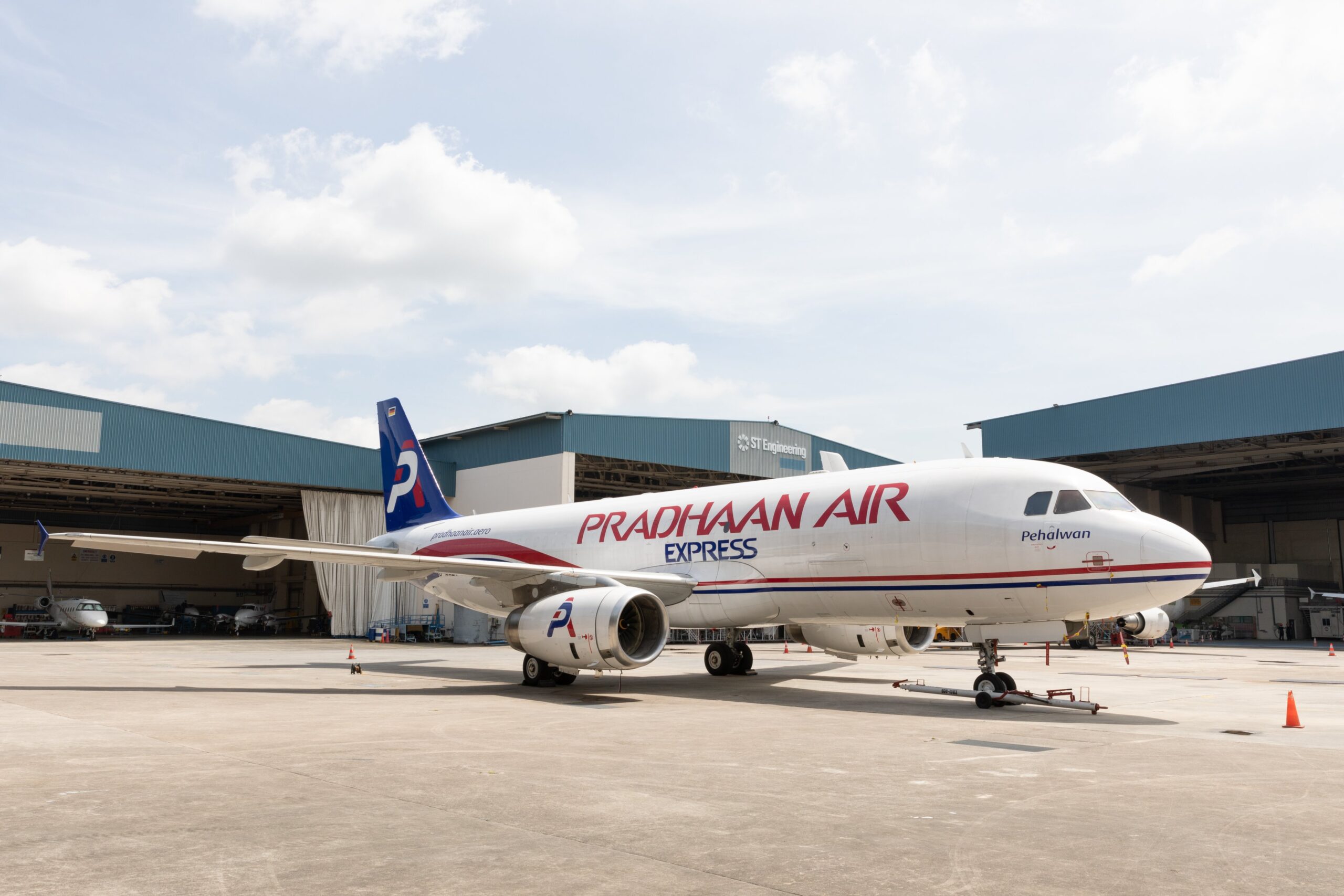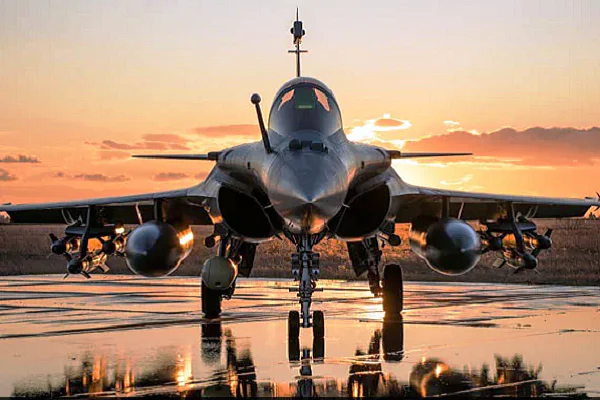America’s Northrop Grumman B-2 Spirit is the only operational stealth bomber in the world today after having entered operational service in 1997. Well, if reports are to be believed, China too, is working on a new stealth strategic bomber, details of which aren't known much due to its classified nature.
Reportedly, China’s first intercontinental deep strike bomber, the Xian H-20, is nearing its first flight and if true, would be the world’s first publicly disclosed non-American stealth bomber ever to fly.
The Xian H-20 is touted to be nuclear-capable and may be armed with conventional, nuclear-tipped or hypersonic stealth cruise missiles, thereby sending a strong message to the United States and its Pacific allies in an era of rising geostrategic tensions.
Business Insider
Stealth fighters like the F-35, F-22, J-20, or Su-57 are all limited by the physical requirements for aerobatic fighter performance, forcing the inclusion of design elements like vertical tail surfaces that can render them detectable against low-frequency radar arrays. What's special about a stealth bomber is that it may fly over you and you may not even realize it.
Will China's H-20 be the one to kill America's monopoly on heavy-payload, deep-penetration, stealth-bomber technology or is this just another rip-off from America’s low-observable past?
According to photos released by China North Industries Corporation- Norinco, in its Modern Weaponry monthly magazine show that the fighter has a flying wing design, a weapons bay, two adjustable tail wings and a frontal airborne radar. Additionally, it also features stealth air intakes on both sides and is covered in dark grey radar-absorbent material.
Representative | Science Techniz
Reportedly, it will have a maximum takeoff weight of 200 tons, a payload of 45 tons and fly at high subsonic speeds with a claimed range of 7,500 miles without the need for aerial refuelling.
According to Warrior Maven's Kris Osborn, it could be compared to a B-2 clone.
Northrop Grumman B-2 Spirit | Wikipedia
It features a similar rounded upper fuselage, blended wing body, curved upper air inlets and essentially no vertical structures. There appears to be a fair amount of evidence, simply available to the naked eye, to demonstrate China’s overt ‘copycat’ maneuverOsborn wrote
According to Defence Website 1945, China aims to have the H-20 at operational capability by the end of the decade, which also happens to be pretty close to the US’ timeline for its B-21 Raider- the successor to the B-2 Spirit stealth bomber.
Interestingly, this concept of stealth bomber can also be compared to the Tupolev PAK DA of a similar role, configuration and era.
Tupolev PAK DA | thediplomat.com
In 2018 China seemingly confirmed that its forthcoming H-20 stealth bomber would leverage a flying wing design reminiscent of America’s own B-2 Spirit.
Northrop’s B-21 teaser top, China’s H-20 teaser bottom | sandboxx.us
Reportedly, The Pentagon believes the H-20’s range is “at least” 5,281 miles, as compared to the B-2’s nearly 7,000. The mainland United States is more than 7,200 miles from Chinese shores and the presence of refuelling tankers over the Pacific could potentially tip American defences off about an impending strike.
Although China has made rapid progress modernizing its military apparatus, it does not appear to have demonstrated the same capacity that the United States has for fielding extremely low observable platforms.
SOURCE(s)
COVER: The Week
Read next
Israeli Airlines plans to expand routes to India and other Asian destinations
Radhika Bansal
19 Jul 2022

Israeli airlines plan to expand and open new routes to India and other Asian destinations after Saudi Arabia announced it would allow unfettered access to its airspace, a move that would save fuel costs and reduce flight times.
In the absence of open relations between the countries, however, and given talks on including Oman in the expanded corridor, Israeli Transportation Minister Merav Michaeli said implementation could take several weeks at least.
Before Riyadh's announcement, Israeli airlines could overfly Saudi territory to the United Arab Emirates and Bahrain only. Dropping restrictions on access to Saudi airspace means they will be able to use it to reach Asia too.
Israeli Airlines plans to expand routes to India and other Asian destinations
Both flag carrier El Al Israel Airlines and smaller rival Arkia have already applied for permission to fly over Saudi Arabia which would cut about 2-1/2 hours from flights to India and Thailand. Present routes to those popular destinations bypass Saudi airspace by flying south over the Red Sea around Yemen.
The United States has been meditating on the expanded overflights, which Michaeli said would eventually entail direct coordination between Israeli and Saudi civil aviation agencies - even though Riyadh has yet to formally recognise Israel.
"It's a better situation than full alienation and zero communication. So whatever we can achieve, we should go for it and work toward building more and more of a relationship and more and more trust.I'm sure it will be worked out again, just to sort of refresh this agreement. But again, this is one of the details that's being worked out and we need to be cautious about it and wait and see until it happens."Merav Michaeli, Israeli Transportation Minister
Asked when the expanded Saudi corridor will be implemented, she said: "Your guess is as good as mine. I hope it's not months, but weeks."
Asia-bound Israeli planes crossing Saudi would want to skirt Iran by continuing into the airspace of Oman - which, Michaeli said, gave initial approval for Israeli overflights in 2018. Faster, more direct routes would also mean lower fuel burn.
This in turn would help efficiency for El Al by allowing it to use smaller aircraft on its route to Mumbai while saving fuel on its nearly daily flights to Thailand, said Shlomi Am Shalom, an El Al official.
Both flag carrier El Al Israel Airlines and smaller rival Arkia have already applied for permission to fly over Saudi Arabia which would cut about 2-1/2 hours from flights to India and Thailand.
"We can take a big airplane and use it in other places like Australia and Japan," he said, adding flying to Melbourne and Tokyo was still in the planning stages.
Similarly, Arkia said it planned to start flights to Goa, India, in November and was considering new destinations such as Thailand and Sri Lanka using Airbus A321neoLR aircraft.
Israel's Tourism Ministry has said the expanded Saudi corridor would eventually make airline tickets some 20% cheaper. The airlines, however, have been less explicit about a price drop.
Air India is also set to increase capacity between India and Israel from August with the start of two new routes to Tel Aviv.
An Israeli official said he expected members of the country's Muslim minority to be able to fly directly to Saudi Arabia for pilgrimage by next year.
ALSO READ - Air India plans to expand capacity between India and Israel
Air India is also set to increase capacity between India and Israel from August with the start of two new routes to Tel Aviv. The carrier has scheduled the launch of flights to Tel Aviv’s Ben Gurion (TLV) from both Bengaluru (BLR) and Mumbai (BOM). The airline already flies to the city from Delhi (DEL).
(With Inputs from Reuters)
Read next
A letter was written to the aircraft manufacturer Airbus by IndiGo technicians complaining that the airline is not following standard maintenance procedures leading to risking passengers' safety.
They said the technical staff has been on a strike for a couple of days and the airline is operating flights without proper maintenance.
The letter written by the All-India Aircraft Technicians on July 12 asked Airbus to intervene to avoid any untoward incidents with aircraft supplied by the manufacturer.
IndiGo not following proper maintenance procedures.
Calling the allegation baseless, IndiGo said, “IndiGo follows the highest standards of aircraft maintenance and adheres to all regulatory norms. Such allegations are completely baseless and are being spread with malicious intent.”
"I request you to kindly intervene in this matter and ask the operators to share maintenance data of the past seven days.We have a fleet of over 280 aircraft with high operational availability, making it one of the safest airlines in the world. We are committed to providing an on-time, affordable, safe and a courteous and hassle-free service to all our customers."Letter written to Airbus
The technicians said in the letter that “... the operators to whom you have leased your aircraft are not following the standard procedure of maintenance. For the past four days, technical staff are on strike and still they are flying the aircraft without proper maintenance and even they are deferring the scheduled maintenance”.
When contacted, an Airbus spokesperson said, “We do not comment on the operations of our customers.”
IndiGo’s technicians protest against low salaries and go on sick leave.
A day after this letter, IndiGo terminated the services of a few technicians who participated in the strike. However, it is unclear if they were terminated due to the letter. The strike was called in protest against lower pay. Several aircraft technicians reported being sick and skipping work to press for salary hikes.
ALSO READ - IndiGo initiates disciplinary action after several technicians call in sick
The technicians pointed out that improper maintenance can have a major impact and cause serious damage to Airbus’s image in the international market.
Naming a couple of airline officials who allegedly are responsible for the situation, the technicians said, “They have downgraded the maintenance standards of your aircraft. You can directly question them for improper handling of aircraft.”
A day after this letter, IndiGo terminated the services of a few technicians who participated in the strike.
An official of the Directorate General of Civil Aviation (DGCA) told that the situation had improved as they had conducted checks.
Confirming this, Arun Kumar, director general, DGCA, said, “We have carried out spot checks to ascertain and have found things in order. The issue stands resolved and the operations normal.”
Very few technicians reported for the night shift at the Delhi and Hyderabad airports. A week before that, the budget carrier’s flight operations were hit by en masse leave when employees opted to appear for walk-in recruitment interviews at rival Air India.
Read next
Pradhaan Air Express receives its first converted A320 freighter aircraft
Radhika Bansal
18 Jul 2022

All-cargo airline Pradhaan Air Express has received its first converted A320 freighter aircraft as part of its plans to operate a fleet of four planes by next year. The Delhi-based cargo carrier earlier this month secured the no-objection certificate from the Civil Aviation Ministry to start a cargo carrier.
On July 15th, ST Engineering and Elbe Flugzeugwerke (EFW) announced the redelivery of the Airbus A320 Passenger-to-Freighter (A320P2F) aircraft to launch customer Vaayu Group (Vaayu) at ST Engineering’s airframe facility in Singapore.
ALSO READ - Is it possible to reconvert a converted freighter aircraft ?
https://twitter.com/PradhaanAir/status/1548551096464879617
This A320 P2F is owned by the aviation asset management business of ST Engineering and is the first of several converted freighter aircraft that will be leased to Vaayu. ST Engineering’s Commercial Aerospace business had signed an agreement in February to lease up to five Airbus A320P2F aircraft to Vaayu Group (Vaayu).
The A320P2F can accommodate up to 10 (ULD) containers and one pallet position in the main deck, and seven container positions in the lower deck. Given its gross payload of up to 21 tonnes at a maximum range of 1,850NM and total usable containerized volume of 159 m3, the freighter aircraft has 85% stowage efficiency.
The 21-tons payload capacity cargo plane with a fully palletized main deck will offer charter capacity to domestic shippers and freight forwarders on domestic as well as international routes. The converted freighter will also be available for on-demand cargo charters.
Pradhaan Air Express receives its first converted A320 freighter aircraft
The aircraft will enter into service for Pradhaan Air Express, a new all-cargo airline in India and a sub-lessee of Vaayu. Pradhaan Air announced on July 6 that it has received the No-Objection Certificate (NOC) from the civil aviation ministry and is expected to begin commercial operations later this year.
Pradhaan Air’s first converted A320 cargo plane, named Pehalwan arrived at Delhi Airport on Saturday, July 16 evening.
"The arrival of the aircraft marks the completion of another critical phase and brings us closer to our Air Operator Permit to kick start the commercial operations very soon. We look forward to keeping up the positive momentum, aiming at further fleet expansion.The airline is expected to take the second A320 P2F (passenger aircraft to freighter) by this year-end with further fleet expansion under consideration, he said. "The airline intends to add two A321 freighters to its fleet as well by next year."Nipun Anand, CEO & Founder, Pradhaan Air Express
With this key development, Pradhaan Air Express is moving towards leveraging the boom in the air cargo industry, which has rebounded after the pandemic.
According to data from ch-aviation, the 16.34-year-old twinjet entered service with TAM in April 2006 as PR-MBB.
Pradhaan Air has received the No-Objection Certificate (NOC) from the civil aviation ministry and is expected to begin commercial operations later this year. (Image Courtesy - Shrey Chopra)
After just over a decade flying for the Brazilian carrier, it spent just over a year at Spire Flight Solutions as M-IBAL. However, it remained unused during this time. From April 2018 to October 2020, it served Indian carrier IndiGo as VT-IHM, before joining ST Engineering for its conversion in February 2021.
One of the most significant changes in aviation during the pandemic has been the shift in perception of the cargo side of the business. India is far behind others in the industry when it comes to dedicated cargo operations. However, major airlines such as IndiGo and SpiceJet are veering towards the sector, joining other established players in the country such as Blue Dart.
ALSO READ - First CarGo freighter of IndiGo to be delivered soon; spotted at Seletar Airport
Read next
France has announced that the order of 36 Rafale fighter jets for the Indian Air Force (IAF) has been completed. Despite the global shutdown due to the COVID-19 pandemic, France-based Dassault Aviation has pre-delivered all fighter jets.
While technically all of them have been delivered to India, only 35 of the 36 have arrived in India and the last one is still in France as all 13 India Specific Enhancements (ISE) are being tested.
The Intergovernmental Agreement (IGA) for 36 multi-role fighter jets in flying condition was signed in 2016, following an announcement by Prime Minister Narendra Modi in April 2015, during his visit to that country.
The Rafale is the 4.5 gen fighter jet, making it among the deadliest in the world and was procured after lengthy scrutiny by Indian Air Force, outperforming SAAB Gripen, MiG 35, Typhoon, and F-16 among others.
The first batch of five Rafale jets arrived in India on July 29, 2020, nearly four years after India signed an inter-governmental agreement with France to procure 36 of the aircraft for Rs 59,000 crore.
The first squadron of the Rafale jets is stationed at Ambala airbase due to its strategic location in North India and proximity to Pakistan, while the second one will be based at Hasimara base in West Bengal, due to its proximity to China.
While the IAF took delivery of a batch of three Rafales from France in February this year, bringing the total to 35 combat aircraft arriving in India, the upgrade of the existing aircraft is underway here in India.
The Rafale is available in three variants and all three variants share a common airframe and a common mission system.
These will be upgraded with the 13 ISE configurations that have undergone testing and are qualified and also certified to be mounted on board the jets.
The Rafale jets are capable of carrying a range of potent weapons including European missile maker MBDA's Meteor beyond visual range air-to-air missile, Scalp cruise missile and MICA weapons system will be the mainstay of the weapons package of the Rafale jets.
The twin-engine omnirole fighter jet is known for air supremacy, interdiction, aerial reconnaissance, ground support, in-depth strike, anti-ship and nuclear deterrence fighter aircraft, equipped with a wide range of weapons.
ALSO READ - IAF receives 3 Rafale fighter jets with India-specific upgrades from France
Read next
Recent emergency landings led to Scindia’s high-level meeting with senior DGCA officials
Jinen Gada
18 Jul 2022

As many as three aircraft of global airlines have made emergency landings at various airports in India in a span of 48 hours, making it a day of technical emergencies for various airlines. The emergency landings happened as a result of several technical issues.
These landings were made in Calicut, Chennai and Kolkata on Friday, July 15 and Saturday, July 16, said a senior official in the Directorate General of Civil Aviation (DGCA).
The official said, "We had two emergency landings of foreign operators on Saturday. Air Arabia at Cochin due to hydraulic issues and Ethiopian at Kolkata due to pressurisation issue."
Air Arabia did an emergency landing at Cochin due to hydraulic issues
Whereas at Kochi, a full emergency was declared on Friday, July 15 after an incident of hydraulic failure was reported from an inbound Air Arabia flight from Sharjah, the Cochin International Airport Limited (CIAL) said. All passengers and crew were safe.
In another incident on Saturday, July 16, an aircraft of Ethiopian Airlines from Addis Ababa to Bangkok made an emergency landing at Kolkata airport due to a pressurisation issue.
In a similar incident on 15 July, a Srilankan Airlines flight made an emergency landing at Chennai airport due to a Hydraulic issue. The Colombo-Chennai flight (UL121) developed the snag as it neared the city.
Srilankan Airlines flight made an emergency landing at Chennai airport due to a Hydraulic issue.
A full emergency was declared and crash tenders were positioned by the side of the runway as per protocol. The DGCA has ordered a detailed investigation into all of these incidents.
Meanwhile, a Hyderabad-bound IndiGo airliner from Sharjah was diverted to Pakistan's Karachi early in the morning.
The Indian airspace appears to be cursed at the moment. As many as three aircraft of International carriers made emergency landings on the tarmac at different airports across the country in the last 48 hours.
"IndiGo flight 6E-1406, operating from Sharjah to Hyderabad was diverted to Karachi. The pilot observed a technical defect. Necessary procedures were followed and as a precaution, the aircraft was diverted to Karachi."IndiGo
In the wake of a string of technical malfunction incidents involving Indian carriers, Aviation Minister Jyotiraditya Scindia held a meeting on safety issues with senior officials of his ministry and regulator Directorate General of Civil Aviation (DGCA).
During the meeting, the minister took a detailed report from the officials about these incidents over the last one month and told them that there should be no compromise over passenger safety.
Scindia directed the officials to strictly adhere to the prescribed safety norms and avoid any kind of laxity towards passenger safety.
Recent emergency landings led to Scindia’s High-level meeting with senior officials
An Air India Express flight from Calicut airport to Dubai too was diverted, landing in Muscat early on Sunday, July 17 after the crew detected a burning smell from one of vents inside the cabin.
Indian aviation has recently seen several mid-air and on- ground incidents involving Indian airlines. Much of the concern has been with the budget carrier SpiceJet, which was issued a warning notice by the DGCA earlier this month over why action should not be taken over a string of lapses.





Comment